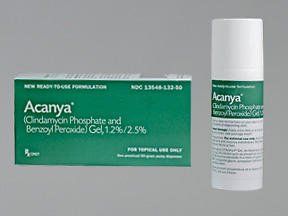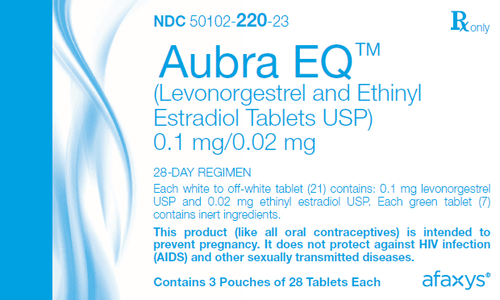This is an automatically translated article.
Acne is a common disease and difficult to cure completely if not treated properly. Currently, there are many drugs used to treat acne, depending on the type of acne and different acne conditions and Adapalene is one of them. So what is Adapalene? Let's find out right in the article below:
1. What is Adapalene?
Adapalene is a retinoid medication used to treat acne. It reduces the number and severity of acne breakouts and promotes faster healing of existing breakouts. Adapalene contains the active ingredient Adapalene. Pharmacodynamics: Adapalene is a derivative of naphthoic acid and an active metabolite, so no metabolic metabolism is required. When applied topically, Adapalene penetrates the hair follicles due to its lipophilic nature and absorption occurs 5 minutes after application.The drug binds nuclear retinoic acid receptors, RAR- beta and RAR-gamma. This complex then binds to DNA via binding to one of the three retinoid receptors to initiate transcription, leading to downstream keratinocyte proliferation and differentiation. As a result, Adapalene normalizes the differentiation of follicular epithelial cells and mature dead cells.
In addition, Adapalene modulates the immune response by downregulating the expression of number receptor 2 (TLR2) and inhibiting transcription factor activating protein 1 (AP-1). TLR2 recognizes Cuti Bacterium acnes, the main bacteria involved in acne. Activation of TLR2 induces nuclear transactivation of AP-1 and regulation of proinflammatory genes. Therefore, the drug Adapalene has anti-inflammatory effects that reduce the symptoms of acne.
Pharmacokinetics
Absorption and distribution: Absorption of Adapalene through the skin is low. In clinical trials, no plasma concentrations of Adapalene were found after application to acne-prone skin with an analytical sensitivity of 0.15 mg/ml. Metabolism: Glucuronide is the major product of the metabolism of the drug Adapalene. About 25% of the drug is metabolized, the remainder is excreted unchanged. Elimination: Adapalene is excreted mainly via the biliary tract with about 30 ng/g of topical application. It is then rapidly eliminated from plasma, usually undetectable for about 72 hours after application. Drug form and content: Cream: 0.1%. Adapalene/benzoyl peroxide gel: 0.1%/2.5%, 0.3%/2.5%.
2. Indications and contraindications of the drug Adapalene
2.1. Indications Adapalene is indicated in the following cases:
Treatment of mild to moderate acne, nodules, papules and pustules. Use for dry, light-colored skin. Treatment of acne in areas such as the face, chest or back. 2.2. Contraindications Adapalene is contraindicated in the following cases:
Patients with hypersensitivity to Adapalene. Women who are pregnant or planning to become pregnant.
3. Dosage and how to take Adapalene
3.1. Dosage Adults with acne
Use Adapalene 0.1% cream, 0.1% gel, 0.3% gel. Apply to the area designated for acne treatment once a day before going to bed, after cleansing the affected area. Apply a thin layer on the skin to be treated, do not let the medicine get around the eyes, mouth, corner of the nose and mucous membranes. Lotion: Apply a thin layer of lotion to the entire face and other acne-affected areas once a day, after gently washing your face with a soap-free cleanser. Apply a pea-sized amount of lotion (3-4 times of application) to the entire face. Avoid applying cream around the eyes, lips and mucous membranes. Children with acne
0.1% cream, 0.1% gel, 0.3% gel Children under 11 years of age: Safety and efficacy have not been reported in this subject. Therefore, do not arbitrarily use without consulting your doctor to minimize unwanted effects. Children 12 to 18 years old: Apply to damaged skin once a day before going to bed, after washing face. Apply a thin layer to the area to be treated, avoiding the area around the eyes, mouth, corner of the nose and mucous membranes. 3.2.How to use Adapalene Wash your hands before applying the medicine, you can use your finger or a piece of gauze, cotton swab to apply the medicine evenly. Adapalene is for use on the skin only, not for use on mucous membranes inside the lips or on the skin inside the nose/mouth. Do not apply the medicine to areas of skin with open wounds, burns, sunburns, or eczema. If eye drops occur, rinse gently with plenty of water. If eye irritation worsens, notify your doctor. Wash your hands after applying the medicine to avoid accidental contact with the eyes. The effect of the drug is noticeable after 8-12 weeks of treatment. However, during the first few weeks of using Adapalene, your acne may get worse because it acts on acne that forms inside the skin.
Note: Use the drug exactly as directed by the doctor about the dose and number of times to use during the day. Do not arbitrarily decrease or increase the dose each time or increase the number of times of application as prescribed. Acne will not improve faster, but on the contrary increases the risk of redness, peeling and pain.
4. Treatment of overdose, missed dose of Adapalene
4.1.Overdose Adapalene is only used topically and applied topically, not taken orally, so the systemic absorption is quite low. In some cases, users apply too much medicine to expect immediate results. However, this will not have quick or better results and may cause more harmful skin irritation.
When symptoms of overdose appear, you need to review the dose prescribed by your doctor to take the correct dose prescribed. If you accidentally take a small amount of Adapalene, consult your doctor for appropriate intervention.
4.2.Forgotten dose Take as soon as you remember, do not take a double dose to make up for the missed dose. If it is almost time for your next dose, skip the missed dose and take the dose as directed by your doctor.
5. Side effects when using Adapalene
Stop using Adapalene and go to the nearest medical facility immediately if you have any signs of an allergic reaction such as: hives, difficulty breathing, swelling of your face, lips, tongue and throat.
Your skin may become dry, red or scaly, this is a common reaction during the first 4 weeks of using Adapalene.
Some less serious side effects may also occur, such as burning, burning, itching, redness or irritation.
If during the course of taking the drug, there are any undesirable effects that are suspected to be related to the drug, immediately notify your doctor or pharmacist.
6. Adapalene drug interactions
Adapalene should not be used concurrently with drugs that have peeling, astringent or irritating effects. If used in combination with a topical antacid such as erythromycin solution (up to 4%) or clindamycin phosphate (1% as base) or water-based benzoyl peroxide gel for up to 1 hour should be used in the morning and indicated for use at night is the drug Adapalene. Avoid the case where two drugs are incompatible and do not achieve the desired treatment goal. Tell your doctor about the medications you are taking (including prescription, over-the-counter and dietary supplements) for appropriate advice.
7. Some notes when using Adapalene
Before taking Adapalene:
Tell your doctor or pharmacist if you are allergic to Adapalene or any other medicines. If you are taking or plan to use certain other medicines (prescription, over-the-counter, herbal, vitamins) tell your doctor or pharmacist. Even your daily skin care products such as cleansers, moisturizers, cosmetics . Because some drugs when used concurrently with Adapalene can increase the risk of skin irritation. If you have a history of cancer or eczema, let your doctor know so he can prescribe a safer and more effective medication. Limit exposure to sunlight and artificial light as much as possible, wear protective clothing, use sunglasses, and apply sunscreen with SPF 15 or higher, especially if your skin burns easily. In addition, avoid prolonged exposure to cold or windy climates. During the use of Adapalene, do not use hot wax to remove hair (wax). Use in pregnancy or breast-feeding: There are not enough studies to determine the risks of taking Adapalene during pregnancy or breast-feeding. If you need to take medication, consult your doctor. This drug is a class C drug for pregnancy. Do not use Adapalene topical without consulting your doctor while you are breastfeeding. Keep the medicine at a temperature below 25 degrees Celsius, away from moisture and direct sunlight. Keep out of reach of small children. Adapalene is a retinoid medication used to treat acne. It reduces the number and severity of acne breakouts and promotes faster healing of existing breakouts. To ensure the effectiveness of treatment, patients need to take the drug according to the instructions of the doctor, professional pharmacist.
Follow Vinmec International General Hospital website to get more health, nutrition and beauty information to protect the health of yourself and your loved ones in your family.
Please dial HOTLINE for more information or register for an appointment HERE. Download MyVinmec app to make appointments faster and to manage your bookings easily.













